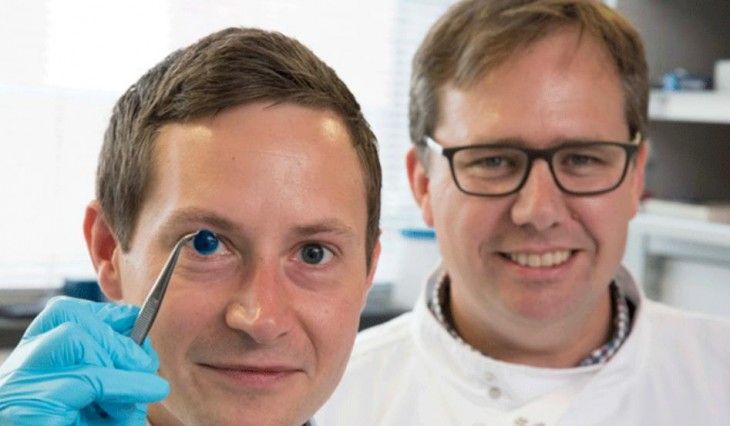Researchers at the University of Newcastle (tissue engineering professor Che Connon and his team) have given new hope to all those who have some kind of damage to the cornea and need an implant.
They have developed a 3D printing technique using a simple three-dimensional bioprinter, thanks to which they have combined healthy corneal stem cells with collagen and alginate (a type of sugar sometimes used in tissue regeneration) to create a biological ink capable of reproducing the shape of a human cornea in just 10 minutes.
Dr Steve Swioklo, co-author, with Prof Che Connon on the right
Dr Steve Swioklo, co-author, with Prof Che Connon on the right
In the article, they indicate that they are able to keep the stem cells alive while producing a material that is rigid enough to maintain its shape but soft enough to be ejected by the nozzle of a 3D printer.
An estimated 10 million people worldwide are at risk of corneal blindness due to infectious disorders, so such a technique could go a long way to reducing the transplant queue.
To make the replicas, the researchers examined the patients’ eyes to determine the necessary dimensions and coordinates, although they make it clear that it is only an experiment at the moment, so it may take us years to see something like this on a day-to-day basis.
